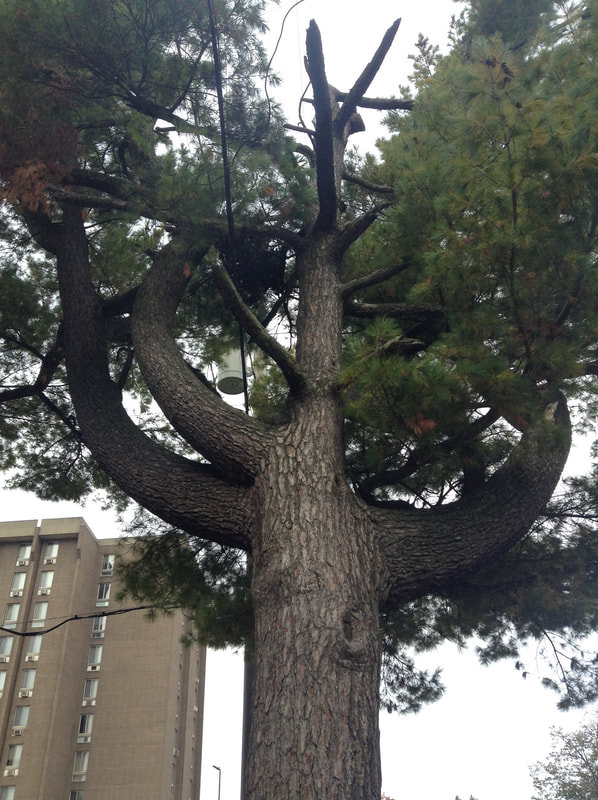|
Photo and story by Donna Iverson
A lot of the latest gardening advice goes against my nature ..obsessive neatness. In recent years, we have been told to let the leaves rot were they fall. We have been asked to rethink our relationship with weeds as some are more nutritious than the vegetables we cultivate. Now I learn that we should leave dead tree branches on the tree and dead logs in the yard. Why? In a word: biomass. What ? Basically, removing dead organic matter from your yard means a considerable loss of habitat for the insects, birds and animals that your garden needs to thrive and even survive. That brings us to snags. Tree snags to be exact. Snags refer to a standing dead or dying tree, often with a missing top. Sometimes they are called wildlife trees as they are a vital backyard sanctuary for wildlife. Snags develop as trees die of old age or disease. According to Wikipedia, snags also refers to trees, branches, and other pieces of naturally occurring wood found sunken in rivers and streams. And even dead logs lying in the woods or your backyard. Snag trees like the one pictured here are rarely seen in urban neighborhoods as we are quick to remove them, seeing them as unsightly. But if you want to support the wildlife around you, maybe you should consider leaving a dying tree and/or log in your yard. For if you do, many a living creature will benefit. And who are these creatures? The list is long. First, there are the cavity nesters, like woodpeckers, squirrels, bats, and even bluebirds. Birds of prey will use the snags for lookouts. This includes hawks and owls. Insects will feed on the bark providing lunch for the birds and animals that depend on them for their survival. And bats. Even if you don't have a snag tree, you can offer similar habitat cover by leaving a log to rot near your garden. Even a stump supports wildlife. That log will attract salamanders, snakes, hedgehogs, and small birds, like the elusive brown creeper. If the dead or dying tree is threatening your house or other building, you can have it trimmed rather than removed. You may have some explaining to do when the tree removal service shows up but you are the paying customer after all. And if neighbors are giving you the evil eye, create a small sign that reads "woodpecker habitat." Since reading about snag trees I have been on the look-out for them and now find them visually interesting and see them as wildlife habitat and not ugly dying trees. Maybe you will too?
1 Comment
Sally Wagoner
12/3/2019 07:50:05 am
Thanks, Donna, for bringing attention to dead wood and messy landscaping, and how that benefits our wildlife and natural habitats. I sometimes feel I have to apologize to my neighbors for my "gardens" and yard: they are not symmetrical, manicured, or very well designed. But they are an abundance of texture and variety, often from roadside transplants of native greenery. And when I see chickadees and titmouses clinging to the tall, swaying cup plants in midwinter that I didn't bother to cut down in fall; or even spying a diminutive native bee on a native aster that my neighbor thought was a weed; or know that my thriving toad population sleeps relatively safe under my intentional leaf cover, I feel justified in being a messy landscaper.
Reply
Your comment will be posted after it is approved.
Leave a Reply. |
Archives
April 2024
Categories |

 RSS Feed
RSS Feed